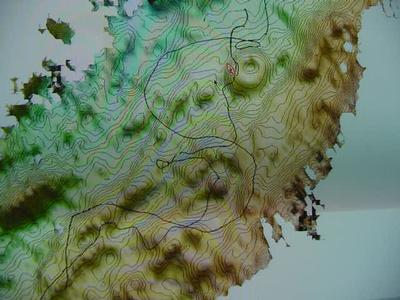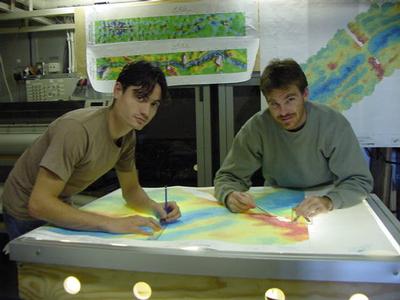
|
|
10 August, 2001
August 10, 2001
How Do We Know What's Down Below?
We have been sailing aboard the USCGC Healy for almost 2 weeks now, and on
our journey we have been making maps of the ocean floor. The maps, made
using a system called Seabeam, are what the lead scientists constantly look
at to make the decisions as to where we will dredge and do the wax coring.
The maps clearly show the topography of the ocean floor, and the scientists
can distinguish the features (such as volcanoes) that they want to collect
samples from. They then relay their plans to the bridge (where the
navigation occurs), and the captain gets us to our destination.
Remember that this area of the world has virtually been unexplored. We are
charting new territory as we make maps.
Statistics:
Latitude: 84 23 N
Longitude: 0 38 E
Air temp: 38 F
Water temp: 29 F

A computer monitor displays the Seabeam map. The black squiggly line shows our path over the last few hours, and the red object is the ship. Notice that are just above an undersea volcano. We stopped here to do a core sampling. <>

Greg (on right), a scientist from the University of Hawaii, is the map-making expert in the group. He is surrounded by a gravity map, a magnetism map, and a bathymetric map. He receives a hand from Joel (on left), from the University of Tulsa. <>
Contact the TEA in the field at
.
If you cannot connect through your browser, copy the
TEA's e-mail address in the "To:" line of
your favorite e-mail package.
|
